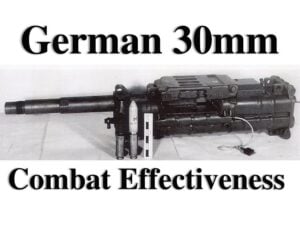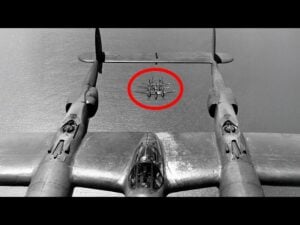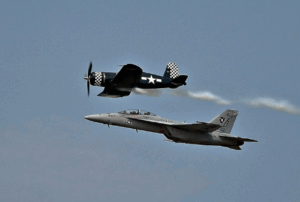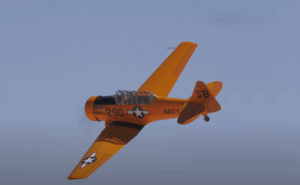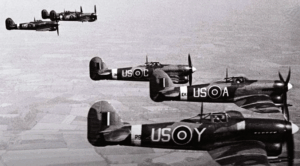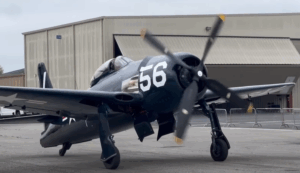5 Underdog Fighter Planes That Surprised the Allies

The Aerodrome / YouTube
During World War II, both the Axis and Allied forces developed many advanced fighter planes. However, some aircraft were underestimated or overlooked by the Allies at first. These planes, despite being considered underdogs, performed beyond expectations and surprised the Allied forces with their effectiveness in combat.
1. Macchi C.202 Folgore (Italy)
The Macchi C.202 Folgore was an Italian fighter that surprised many with its performance during World War II. At the start of the war, Italian aircraft were generally seen as inferior to the more advanced planes used by the Allies. However, when the Folgore entered the battlefield, it changed that perception. Powered by a license-built version of the German Daimler-Benz DB 601 engine, the C.202 was fast, agile, and could hold its own against Allied fighters.
The Folgore’s ability to climb quickly and engage in tight turns made it a dangerous opponent, especially in dogfights over the Mediterranean. While its armament was somewhat lacking compared to other fighters, its excellent handling and speed allowed it to surprise the Allied pilots who underestimated its capabilities. The Folgore played a significant role in defending Italy’s skies and proved that the Italian air force could produce high-performance aircraft.
2. Mitsubishi A6M Zero (Japan)
The Mitsubishi A6M Zero was one of the most iconic Japanese fighter planes of World War II, but it was initially underestimated by the Allies. When it first appeared in combat in 1940, the Zero was faster, more maneuverable, and had a longer range than any Allied fighter at the time. Its design emphasized light weight and agility, allowing it to out-turn most of its adversaries.
The Zero made a strong impression during the early years of the war, particularly during the attack on Pearl Harbor and in battles across the Pacific. Allied pilots, used to facing heavier and slower planes, were caught off guard by the Zero’s speed and maneuverability. It took time for the Allies to develop tactics and aircraft that could counter the Zero effectively, but by then, the Japanese fighter had already earned a reputation as one of the most dangerous planes in the skies.
3. Dewoitine D.520 (France)
The Dewoitine D.520 was a French fighter that entered service in 1940, just before the German invasion of France. At the time, the D.520 was considered an underdog compared to the German Messerschmitt Bf 109, which was widely regarded as one of the best fighters in the world. However, the Dewoitine quickly proved that it was capable of holding its own against the German planes.
With its powerful engine and well-designed airframe, the D.520 was fast and agile, making it a strong competitor in dogfights. It had a good rate of climb and was armed with a 20mm cannon, which gave it a significant punch in combat. Although the fall of France cut short its service in the French air force, the D.520 continued to be used by various air forces throughout the war, including the Free French and even the Germans. Its performance during the Battle of France earned it a reputation as a fighter that was more than capable of surprising its adversaries.
4. Focke-Wulf Fw 190 (Germany)
When the Focke-Wulf Fw 190 made its debut in 1941, it shocked the Allies. At the time, the German Messerschmitt Bf 109 was considered the mainstay of the German fighter force, and the Allies were well aware of its strengths and weaknesses. However, the Fw 190 brought a new level of performance to the battlefield. With its powerful radial engine, rugged construction, and heavy armament, the Fw 190 quickly became one of the most feared fighters in the skies over Europe.
Allied pilots were surprised by the Fw 190’s speed and firepower, particularly in its ability to outmatch British Spitfires in certain aspects of performance. The plane’s versatility also made it suitable for a variety of roles, from bomber escort to ground attack. The Fw 190’s success forced the Allies to adapt their tactics and develop new aircraft to counter its threat, highlighting its status as an underdog that had far exceeded expectations.
5. Kawasaki Ki-61 Hien (Japan)
The Kawasaki Ki-61 Hien was another Japanese fighter that caught the Allies off guard. Unlike the Zero, the Ki-61 was powered by a liquid-cooled inline engine, which gave it a distinctive appearance compared to other Japanese fighters. It was faster and more heavily armed than the Zero, and its performance was more in line with European and American designs.
Allied pilots initially mistook the Ki-61 for a German or Italian aircraft due to its unusual design. However, once it was identified as Japanese, it became clear that the Ki-61 was a serious threat. It was capable of taking on the best Allied fighters, including the P-38 Lightning and P-51 Mustang. The Ki-61’s speed and firepower made it a formidable adversary, and it quickly earned the respect of Allied pilots who had underestimated it at first.


















